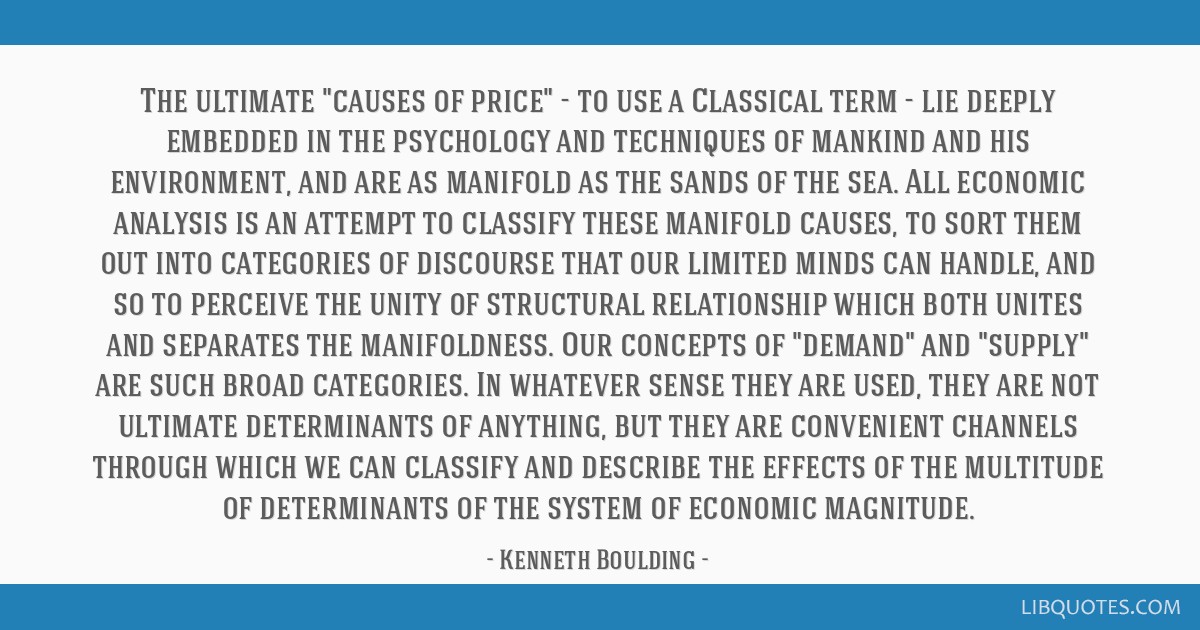The ultimate "causes of price" - to use a Classical term - lie deeply embedded in the psychology and techniques of mankind and his environment, and are as manifold as the sands of the sea. All economic analysis is an attempt to classify these manifold causes, to sort them out into categories of discourse that our limited minds can handle, and so to perceive the unity of structural relationship which both unites and separates the manifoldness. Our concepts of "demand" and "supply" are such broad categories. In whatever sense they are used, they are not ultimate determinants of anything, but they are convenient channels through which we can classify and describe the effects of the multitude of determinants of the system of economic magnitude.
Boulding (1944) "A Liquidity Preference Theory of Market Prices". In: Economica, New Series, Vol. 11, No. 42 (May, 1944), pp. 55-63.
https://cas.umkc.edu/econ/economics/faculty/wray/6...[cas.umkc.edu]





















